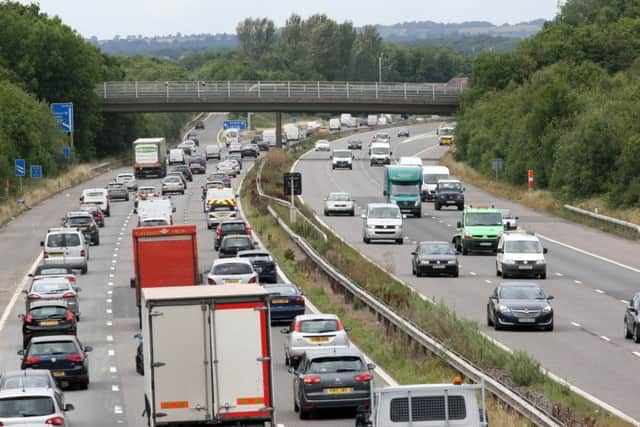Drivers advised - be prepared for winter on the roads
and live on Freeview channel 276
The company responsible for the country’s motorways and major A roads has over 500 salt spreading vehicles ready, around the clock, to help drivers get to their destinations safely.
To monitor the weather Highways England uses 245 anemometers to check wind speeds and has over 260 weather stations at locations across its network. The overhead warning signs are also used to advise motorists of severe weather.
Advertisement
Hide AdAdvertisement
Hide AdHighways England’s national winter and severe weather team leader, Paul Furlong, said: “Whether people are heading to friends and family or commuting to work, we care about people journeys and during any severe weather our teams will be working around the clock to keep traffic moving.


“Safety is our priority and we’re asking drivers to make sure they and their vehicles are also prepared for any eventuality. Before you set out, check your vehicle, the road conditions and the weather forecast. If conditions are poor, and journeys are not essential, consider waiting until the weather gets better – this should improve journeys, and give our gritters a chance to treat the roads.”
During severe winter weather drivers are urged to follow this advice:
• In snow and ice: Drivers should stick to the main roads where they can and only travel if necessary. Drivers are also encouraged to make sure they have a winter kit in their vehicle, including an ice scraper and de-icer, warm clothes and blankets and sunglasses to cope with the low winter sun.
Advertisement
Hide AdAdvertisement
Hide Ad• In high winds: Drivers should slow down and avoid using exposed sections of road if possible. Lorries, caravans and motorbikes are at particular risk.
• In heavy rain: Drivers should keep well back from the vehicle in front, gradually ease off the accelerator if the steering becomes unresponsive, and slow down if the rain and spray from vehicles makes it difficult to see and be seen.
• In fog: Drivers should switch on their fog lights and not use lights on full beam as the fog will reflect the light back.
If drivers really cannot see, they should consider stopping until it is safe to continue.